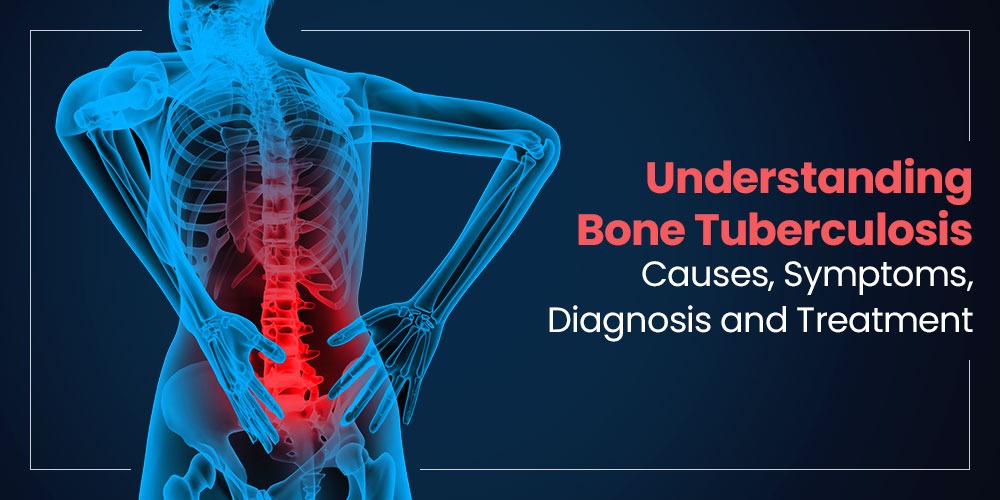What Is Skeletal or Bone Tuberculosis?
Tuberculosis, a severe infectious disease typically affecting the lungs, can also spread to the bones, leading to skeletal tuberculosis. This form of tuberculosis, caused by the highly infectious bacterium Mycobacterium tuberculosis, can travel through the bloodstream, affecting various parts of the body, including the bones, spine, and joints.
Causes of Bone Tuberculosis
Unlike the pulmonary form, skeletal tuberculosis may not primarily spread through the air. Instead, it typically occurs when the infection from pulmonary tuberculosis extends through the blood vessels to the bones, spine, or joints. Individuals may also contract bone tuberculosis through direct contact with infected bodily fluids or pus. This type of tuberculosis is relatively rare and is more commonly seen in areas with a high prevalence of HIV/AIDS, where weakened immune systems make individuals more susceptible to infections.
Symptoms of Bone Tuberculosis
Symptoms of bone tuberculosis can be challenging to detect early on, often appearing only when the infection has progressed significantly. Some common symptoms include:
- Severe back pain
- Inflammation in the back or joints
- Stiffness
- Difficulty moving or walking, especially in children
- Spinal abscess
- Soft tissue swelling
- Neurological disorders
- Tuberculosis-related meningitis
- Muscle weakness
- Paralysis, such as paraplegia or tetraplegia
- Kyphosis, or hunchback
- Bone or spinal deformities.
Diagnosis of Bone Tuberculosis
Diagnosing bone tuberculosis requires various tests and examinations, given its subtle and gradual onset of symptoms. Common diagnostic methods include:
- Bacterial culture: This test involves taking a blood or sputum sample to detect the presence of Mycobacterium tuberculosis.
- Biopsy: A biopsy of infected tissue can confirm the presence of the tuberculosis infection.
- Body fluid tests:Fluid samples from areas such as the pleura (surrounding the lungs), cerebrospinal fluid (around the spinal cord), or synovial fluid (around joints) may be analyzed for tuberculosis infection.
- Polymerase chain reaction (PCR) test: This sensitive test amplifies genetic material from fluid samples, aiding in detecting even small amounts of tuberculosis bacteria. MTBSure – Mycobacterium Tuberculosis Real-Time PCR Kit uses fluorescent probe-based methods for the rapid and accurate detection of Mycobacterium tuberculosis DNA. It is available in pack sizes: 25rxn, 50rxn, 100rxn, 500rxn.
- Immunological tests: Blood samples can be tested for antibodies against tuberculosis or other relevant infections.
- Radiological tests: X-rays, CT scans, or MRIs may be conducted to visualize any bone deformities or abnormalities associated with bone tuberculosis.
Treatment of Bone Tuberculosis
Prompt treatment is important for managing bone tuberculosis effectively and preventing severe complications.
Treatment options typically include:
- Anti-tuberculosis drugs: Medications such as Rifampicin, Streptomycin, Isoniazid, and others are commonly used to combat tuberculosis infection. These drugs can penetrate the cerebrospinal fluid to target the bacteria. Treatment duration may range from 6 to 12 months.
- Corticosteroids: These medications may be prescribed to reduce inflammation, particularly around the spinal cord or heart.
- Surgery: In cases of advanced bone tuberculosis, surgical intervention may be necessary to remove infected tissue or repair damaged bones.
Bone tuberculosis, a form of tuberculosis affecting the skeletal system, requires watchful monitoring and timely treatment due to its subtle onset and severe complications caused by it, if left untreated.
Read our blog about Symptoms, Risk Factors, and Diagnosis of Tuberculosis

